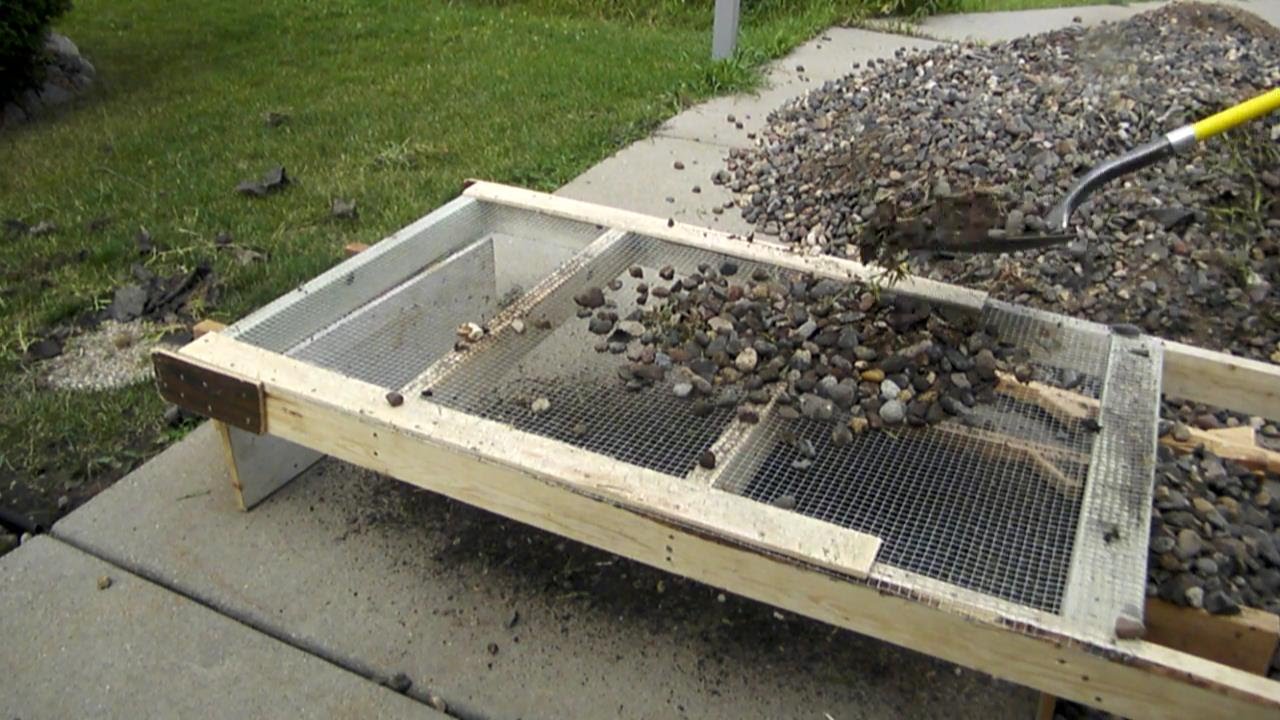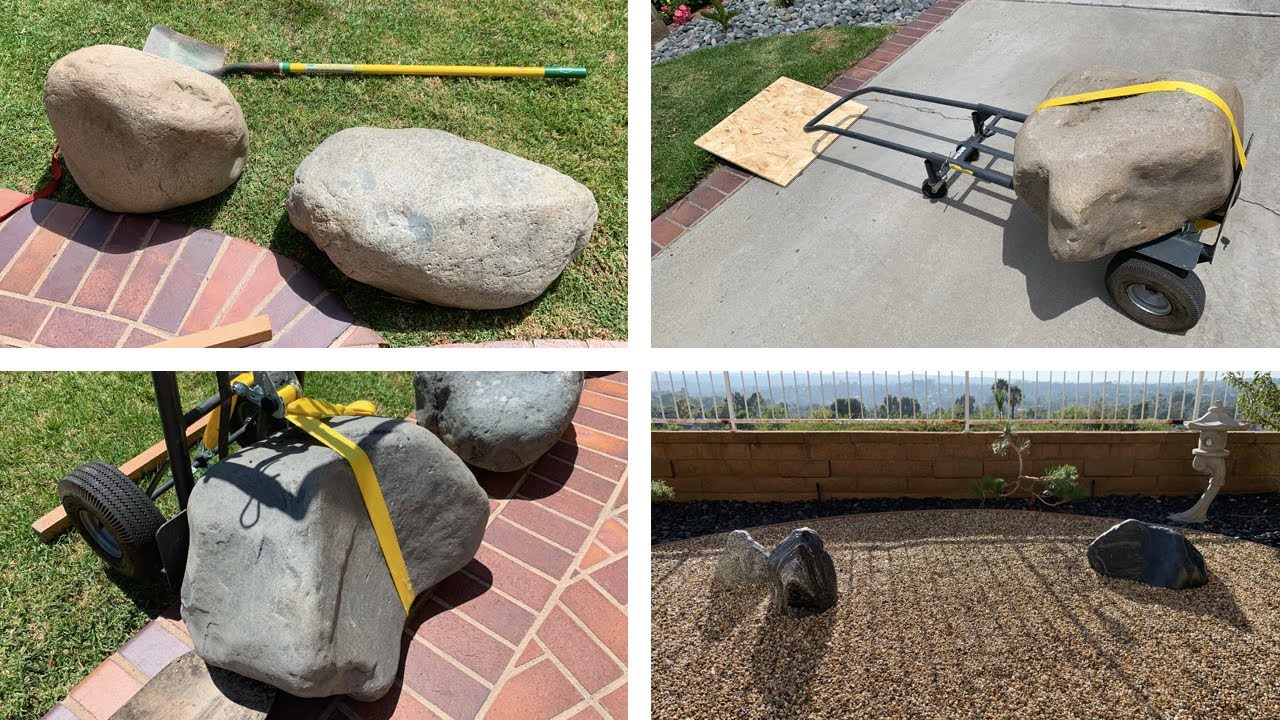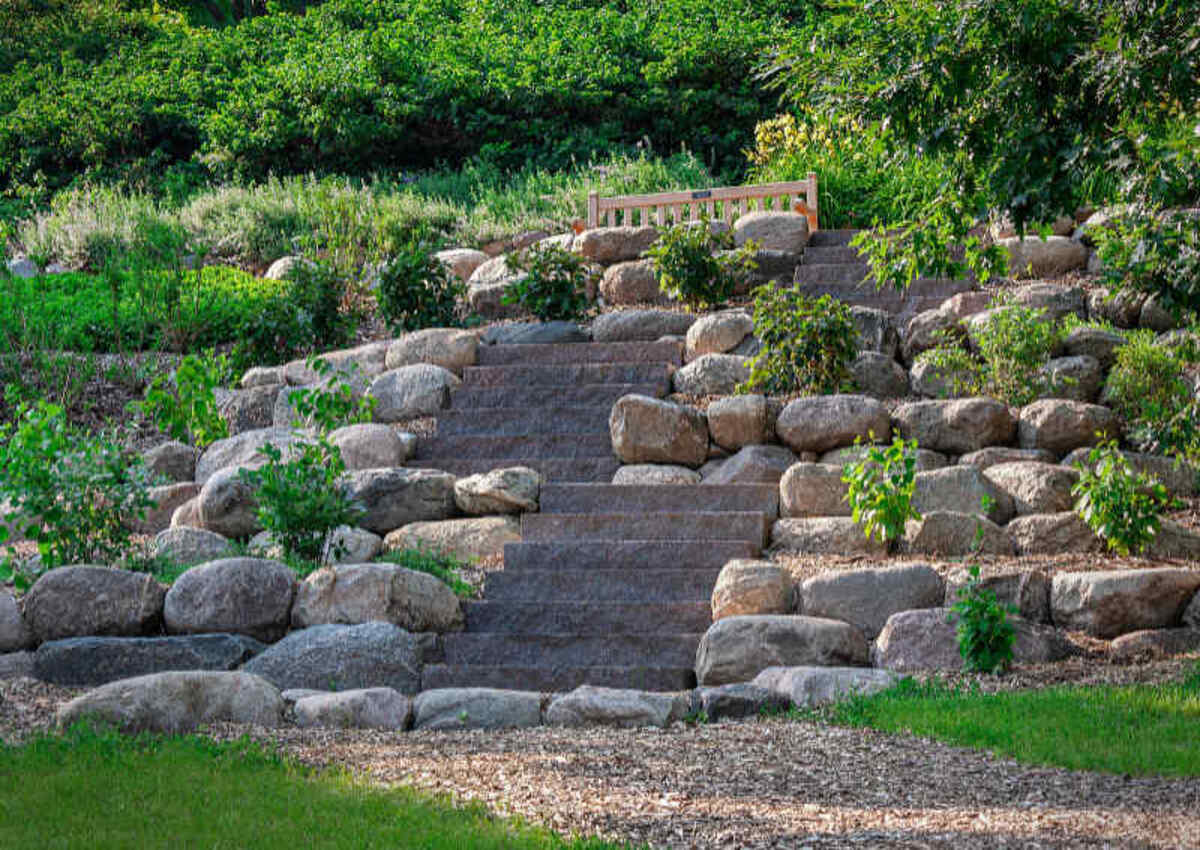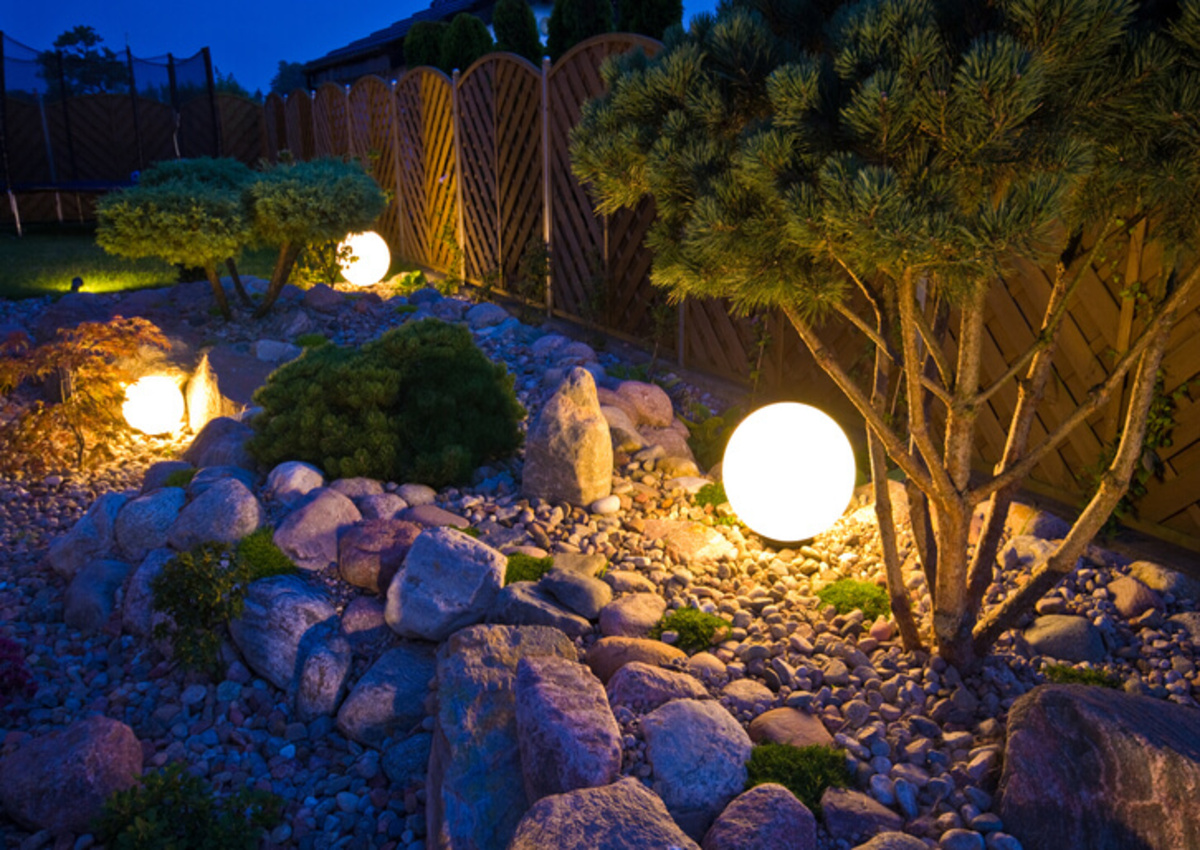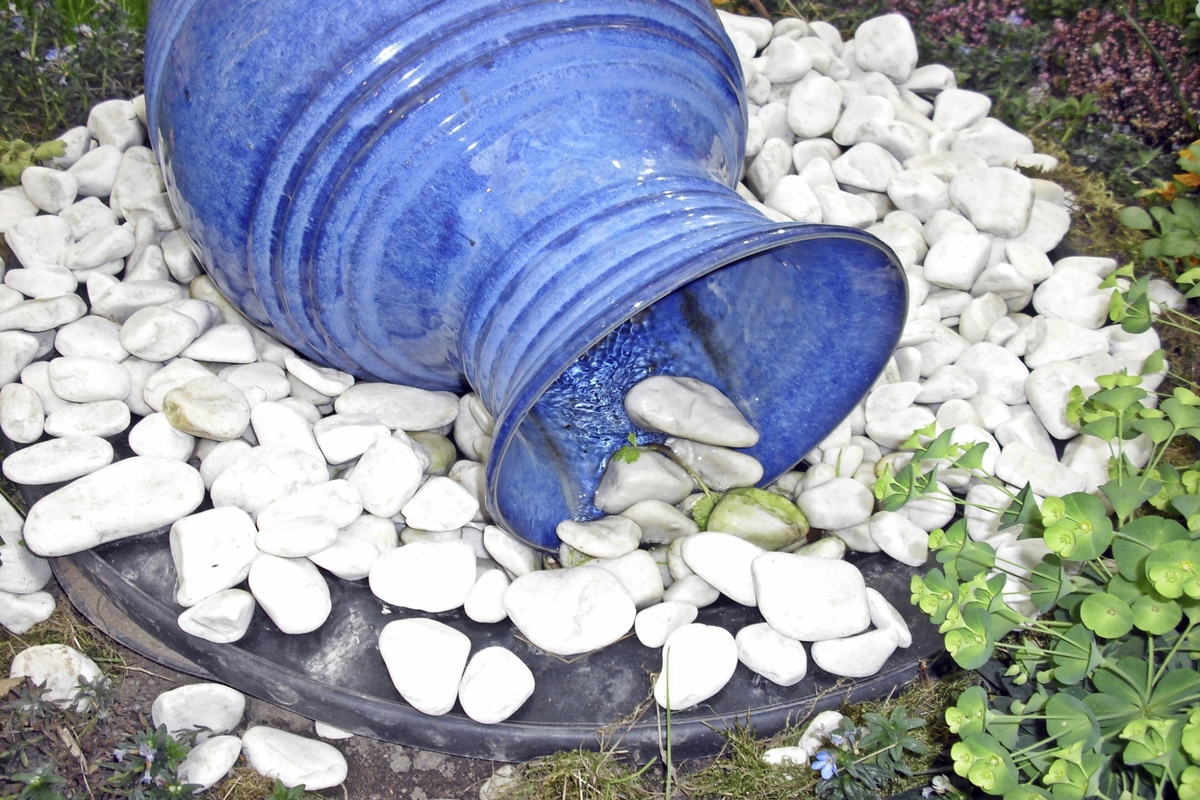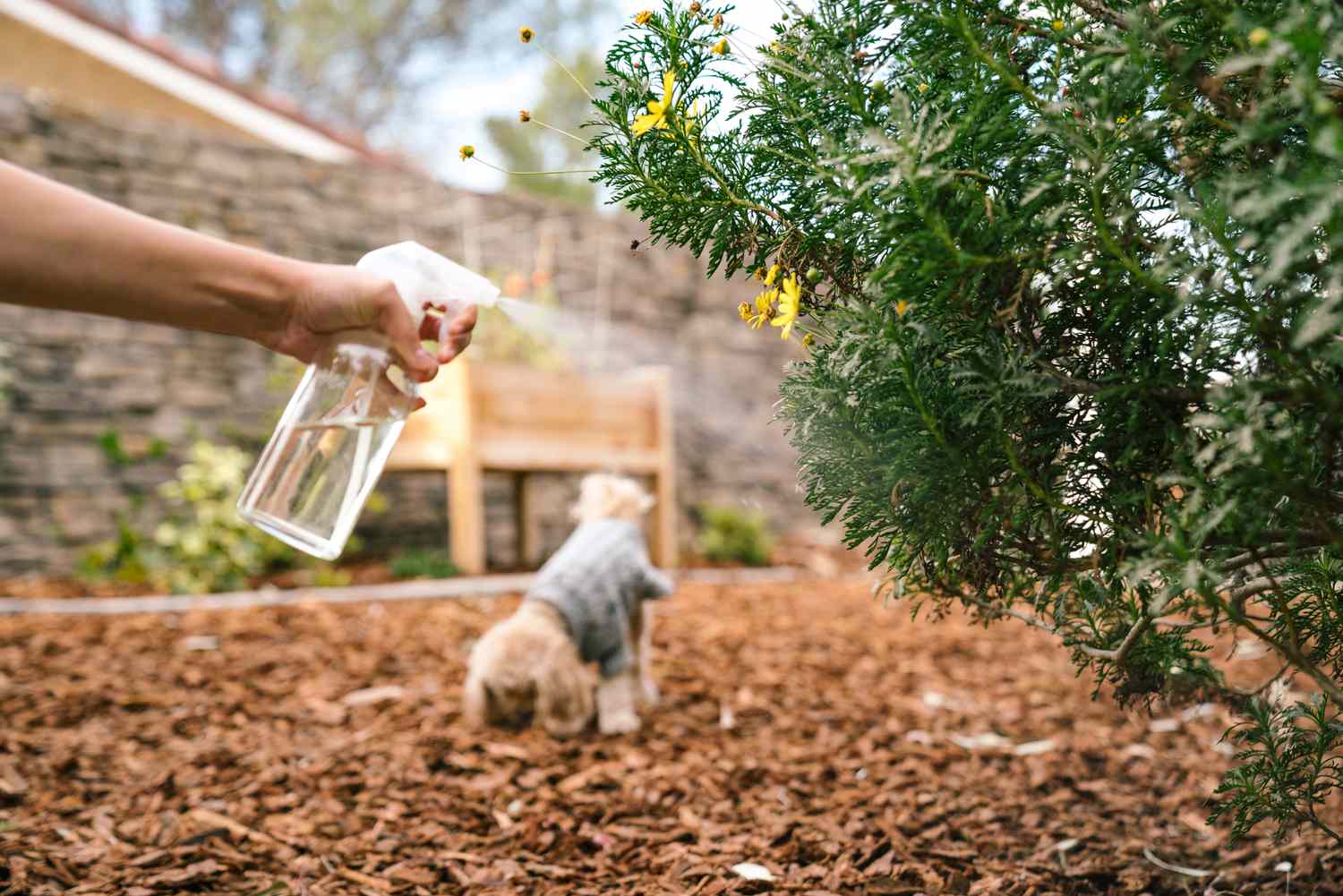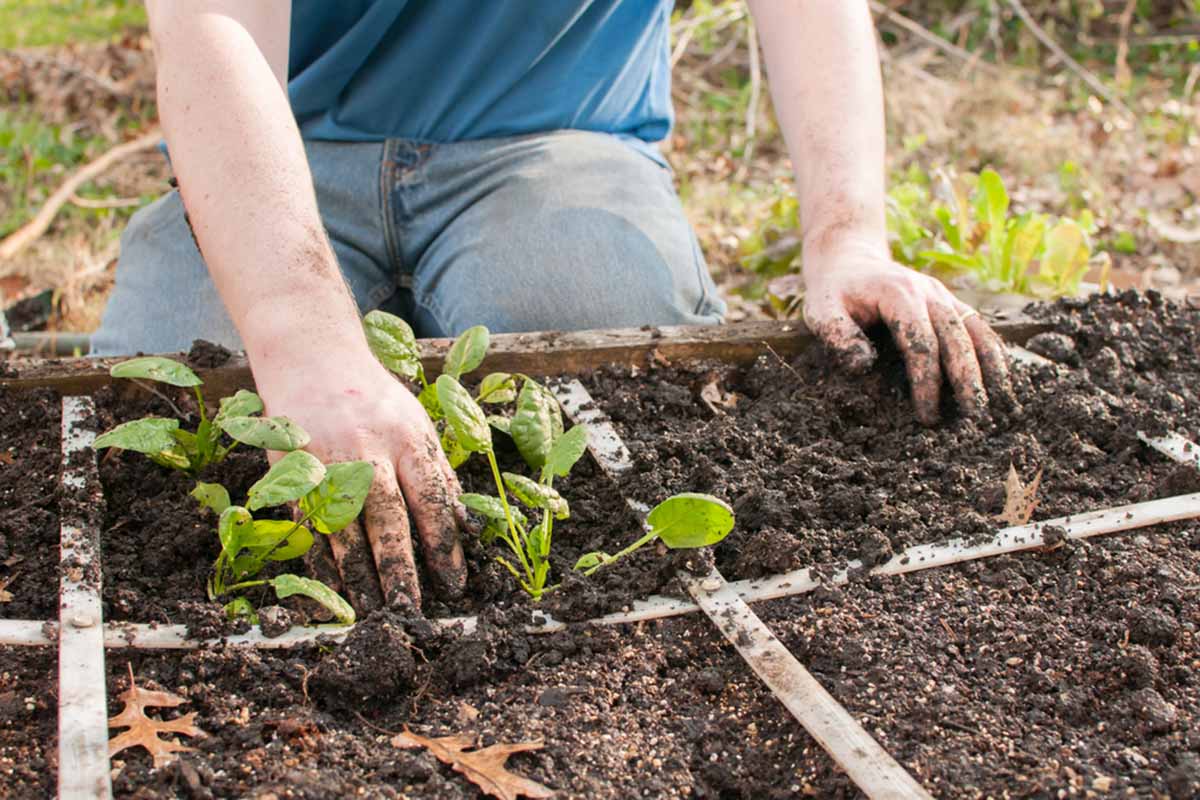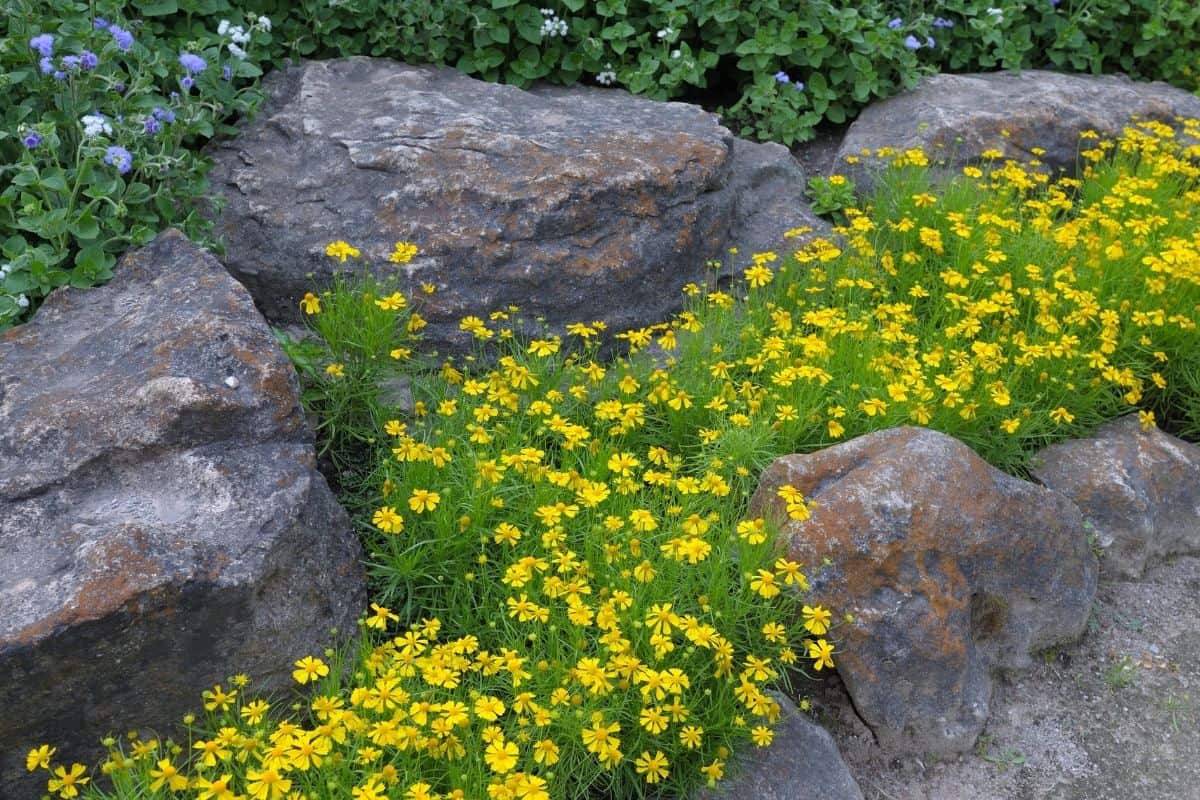Home>Garden Design>Landscape Design>How To Figure Out How Much Rock I Need For Landscaping
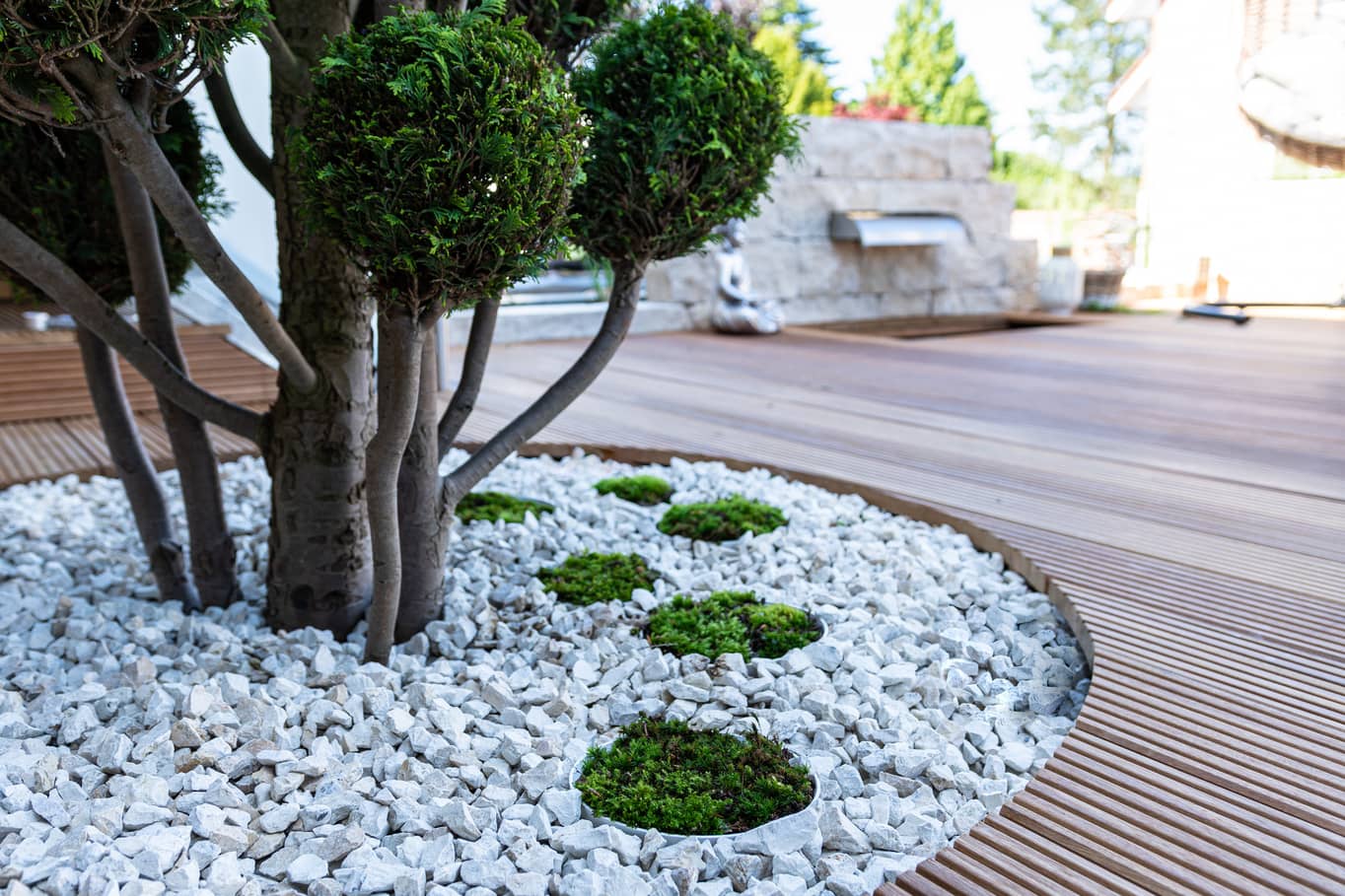

Landscape Design
How To Figure Out How Much Rock I Need For Landscaping
Published: August 16, 2023
Learn how to calculate the right amount of rock for your landscaping project with our helpful guide on landscape design.
(Many of the links in this article redirect to a specific reviewed product. Your purchase of these products through affiliate links helps to generate commission for Chicagolandgardening.com, at no extra cost. Learn more)
Table of Contents
Introduction
Welcome to the world of landscape design! Creating a beautiful outdoor space involves careful planning and consideration, and one essential element is the use of rocks. Rocks can add texture, depth, and visual interest to your landscaping, whether you’re creating a tranquil garden, a stunning rock garden, or a functional pathway.
However, figuring out how much rock you need for your landscaping project can be a daunting task. You don’t want to end up with too much or too little rock, as both scenarios can be problematic. That’s why it’s important to understand the factors involved in determining the right amount of rock for your project.
In this article, we will walk you through the process of figuring out how much rock you need for landscaping. We will cover how to measure the area, calculate the volume, choose the type of rock, determine the thickness, and calculate the total amount needed. By following these steps, you’ll have a clear idea of how much rock to order or purchase for your landscaping project.
Whether you’re a DIY enthusiast or a professional landscaper, this guide will provide you with the knowledge and tools to plan your rock installation effectively. So, let’s dive in and discover how you can transform your outdoor space with the perfect amount of rock!
Factors to Consider
Before diving into the calculations, there are a few critical factors you need to consider when determining how much rock you need for your landscaping project. These factors will help you make more accurate calculations and ensure the success of your project.
1. Usage and function: Consider the purpose of the rocks in your landscaping. Are you using them for decoration, to create a pathway or retaining wall, or for drainage purposes? Understanding the intended function will help you determine the quantity of rock needed.
2. Size and shape: The size and shape of the area you’re covering with rock will impact the amount needed. If you have irregularly shaped sections, you may need to account for extra material to fill in gaps and ensure even coverage.
3. Accessibility: Think about the ease of access to your landscaping area. If it’s challenging to transport materials to the site, it may be more practical to order an extra amount of rock upfront rather than risk running out and having to make multiple trips.
4. Existing landscape: Take into account any existing elements in your landscape, such as trees, plants, or structures. This will affect how much rock you need and where it should be placed to enhance the overall aesthetics of your outdoor space.
5. Budget: Consider your budget when determining the quantity of rock needed. Rocks come in various sizes, types, and prices, so make sure to choose a material that fits within your budget while achieving your desired design.
By thoroughly analyzing these factors, you’ll have a better understanding of the specific requirements for your landscaping project. This knowledge will guide you in making the necessary calculations and ensure you purchase the right amount of rock to bring your vision to life.
Measure the Area
To accurately calculate the amount of rock required for your landscaping project, you first need to measure the area that needs to be covered. This step will help you determine the square footage or square meters of the space.
Here’s a simple guide on how to measure the area:
- Outline the area: Use flags or stakes to mark the boundaries of the area you want to cover with rock. This can be a garden bed, a pathway, or any other designated space.
- Measure the length and width: Using a tape measure, measure the length and width of the marked area. For irregularly shaped areas, break them down into smaller sections and measure each one individually.
- Calculate the square footage: To find the square footage, simply multiply the length by the width. For example, if the length is 10 feet and the width is 5 feet, the square footage would be 50 square feet.
- Convert to square meters (optional): If you prefer to work with square meters, you can convert the square footage by multiplying it by 0.0929. In the previous example, the square footage of 50 would be approximately 4.65 square meters.
By accurately measuring the area, you’ll have a solid foundation for calculating the amount of rock needed. This step is crucial in ensuring you don’t overestimate or underestimate the quantity of rock required for your landscaping project.
Calculate the Volume
Once you have measured the area that needs to be covered with rock, the next step is to calculate the volume of rock required. This is important because rock is typically sold by the cubic yard or cubic meter. To determine the volume, you need to consider the depth of the rock layer.
Here’s how you can calculate the volume:
- Decide on the desired depth: Consider the purpose and function of the rock layer. For decorative purposes, a depth of 2-4 inches (5-10 cm) is typically sufficient. However, if you’re using rock for pathways or drainage, a greater depth may be necessary.
- Convert depth to feet or meters: Ensure that the depth is in the same units as the measurements of your area. Convert inches to feet by dividing by 12, and meters to feet by multiplying by 3.281.
- Calculate the volume in cubic feet or cubic meters: To find the volume, multiply the square footage or square meters of the area by the depth. For example, if the area is 100 square feet and the depth is 0.33 feet, the volume would be 33 cubic feet.
- Convert to cubic yards or cubic meters (optional): If you prefer to work with cubic yards or cubic meters, divide the volume in cubic feet by 27 to convert to cubic yards or multiply by 0.7646 to convert to cubic meters.
Remember, these calculations are based on a single layer of rock. If you plan to have multiple layers, such as in a retaining wall, you’ll need to calculate the volume for each layer separately and add them together.
By accurately calculating the volume, you’ll have a clear understanding of how much rock is needed to achieve the desired depth and coverage for your landscaping project.
Choose the Type of Rock
Choosing the right type of rock for your landscaping project is crucial as it can significantly impact the aesthetics and functionality of your outdoor space. There are various options available, each with its own unique characteristics and advantages. Consider the following factors when selecting the type of rock:
- Appearance: Think about the overall look and feel you want to achieve. Are you aiming for a natural, rustic look or a more modern and sleek design? Choose a rock that complements the existing style and elements in your landscape.
- Durability: Consider the durability of the rock, especially if it will be exposed to foot traffic or harsh weather conditions. Some rocks, like granite or quartzite, are highly resistant to wear and can withstand heavy use.
- Color and texture: Pay attention to the color and texture of the rocks. Some options, like river rocks or pea gravel, come in a range of colors, while others, like limestone or sandstone, offer a more uniform appearance. The texture can also vary from smooth to rough, depending on your preference.
- Availability and cost: Determine the availability of the rocks in your area and consider the cost. Locally sourced rocks may be more readily available and cost-effective compared to imported or rare varieties.
- Functionality: Evaluate the purpose of the rock in your landscaping. For example, if you’re using it for pathways, you might want to choose a smoother rock that is comfortable to walk on. If it’s for drainage, a porous rock like lava rock or crushed gravel may be more suitable.
Take the time to explore different rock options at a local nursery or landscaping center. Gather samples or images to visualize how each type will look in your specific landscape. Additionally, consult with a professional landscaper or designer to get expert advice and recommendations based on your specific needs and goals.
Remember, the type of rock you choose will have a significant impact on the overall appearance and functionality of your landscaping project. Choose wisely to ensure a cohesive and visually appealing outdoor space.
Determine the Thickness
When it comes to landscaping with rocks, determining the appropriate thickness is crucial for achieving the desired aesthetic and functionality. The thickness of the rock layer will depend on various factors, including the intended purpose and the type of rock you have chosen. Here are some steps to help you determine the thickness:
- Consider the purpose: Think about the function of the rock layer. If it’s for decorative purposes or to cover a garden bed, a thickness of 2-4 inches (5-10 cm) is typically sufficient. For pathways or areas with heavy foot traffic, a thicker layer may be necessary to ensure durability.
- Factor in the type of rock: Different types of rocks have different characteristics that may influence the appropriate thickness. For instance, larger rocks may require a greater depth to prevent them from shifting or being displaced over time.
- Think about visual appeal: Consider how the thickness of the rock layer will impact the overall appearance. A thicker layer can create a more substantial visual impact, while a thinner layer may offer a more subtle and blended look with the surrounding landscape.
- Consult with professionals: If you’re unsure about the appropriate thickness for your specific project, it’s always a good idea to consult with professional landscapers or designers. They can provide valuable insights based on their expertise and experience.
Keep in mind that the thickness of the rock layer will also affect the calculations for the volume and quantity of rock needed. Be sure to adjust your measurements and calculations accordingly. With the right thickness, you can achieve a visually appealing and functional rock layer that enhances the overall beauty of your landscaping project.
Calculate the Total Amount of Rock Needed
Now that you have measured the area, determined the volume, chosen the type of rock, and determined the thickness, it’s time to calculate the total amount of rock needed for your landscaping project. By following these steps, you’ll have a clear idea of the quantity of rock to order or purchase.
- Calculate the volume: Refer back to the volume calculation you made earlier. This is the total volume of rock you need in either cubic feet or cubic meters.
- Convert to the appropriate units: Check the measurement units preferred by the supplier or the units in which the rocks are sold. If necessary, convert the volume to cubic yards or cubic meters.
- Adjust for delivery and installation losses: Account for any potential loss of material during delivery and installation. It’s a good practice to add an extra 10-20% to your calculated volume to ensure you have enough rock to cover any unforeseen losses.
- Recalculate for multiple layers (if applicable): If your project requires multiple layers of rock, calculate the total volume needed for each layer. Add these volumes together to get the total volume of rock required.
Remember, it’s better to have a little extra rock on hand than running out in the middle of your project. Having a surplus allows you to make adjustments, fill gaps, or save materials for future touch-ups or repairs.
Once you have the total volume of rock needed, reach out to your local landscape supply store or contact a trusted supplier to place your order. Providing them with the calculated volume will help ensure you receive the correct amount of rock for your landscaping project.
By carefully calculating the total amount of rock needed, you can complete your project smoothly and efficiently, with confidence that you have enough materials to achieve your desired design and functionality.
Order or Purchase the Rock
Now that you have determined the total amount of rock needed for your landscaping project, it’s time to order or purchase the rock. With careful planning and consideration, you can ensure a smooth process and obtain the right materials for your project.
Here are some steps to guide you through ordering or purchasing the rock:
- Research suppliers: Start by researching and gathering information on local suppliers or nurseries that offer the type of rock you have chosen. Look for well-established and reputable suppliers who can provide high-quality materials.
- Request quotes: Contact the suppliers and request quotes for the total volume of rock you need. Be sure to provide them with accurate measurements and specifications to receive an accurate quote.
- Compare prices: Compare the quotes from different suppliers to ensure you get the best price without compromising quality. Take into consideration any additional services they offer, such as delivery or bulk discounts.
- Check availability: Confirm the availability of the rock and inquire about any lead times for delivery or pick-up. Some rock varieties may be more readily available than others, so it’s important to plan accordingly.
- Arrange delivery or pick-up: Coordinate the delivery or pick-up of the rock with the supplier. Provide them with specific instructions regarding the delivery location and any access limitations, such as narrow driveways or gates.
- Inspect the rock upon delivery: Once the rock arrives, inspect it for any damages or inconsistencies. Address any concerns immediately with the supplier to ensure you receive the expected quality and quantity.
- Store the rock properly: If you don’t plan to use all the rock immediately, store it in a dry and covered area to protect it from weather conditions and prevent any deterioration or displacement.
By following these steps, you can efficiently order or purchase the rock needed for your landscaping project. Remember to communicate clearly with the supplier and address any questions or concerns you may have. Proper planning and communication will ensure a successful and satisfying experience when acquiring the necessary rock materials for your outdoor space.
Conclusion
Landscaping with rocks can transform your outdoor space into a stunning and visually appealing landscape. However, determining the right amount of rock needed for your project is essential to its success. By considering factors such as usage, size, accessibility, existing landscape, and budget, you can make informed decisions throughout the process.
Start by measuring the area and calculating the volume of rock required based on the desired thickness. Choose the type of rock that best suits your aesthetic and functional needs, and ensure you accurately calculate the total amount of rock needed. Finally, order or purchase the rock from a reputable supplier, considering availability and arranging for delivery or pick-up.
Remember, it’s always a good idea to consult with professional landscapers or designers to get expert advice tailored to your specific project. They can provide valuable insights and recommendations to help you make the best choices for your landscaping needs.
With careful planning, accurate measurements, and thoughtful selection, your landscaping project will come to life with the perfect amount of rock. Enjoy the process and the transformation of your outdoor space into a beautiful and harmonious environment.
